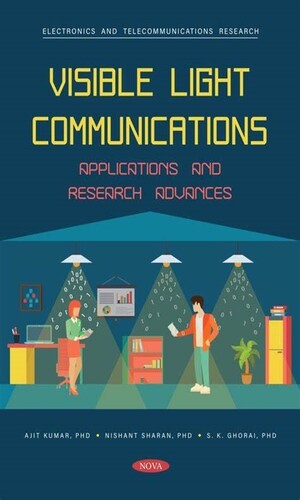Illuminating the Future: How Indoor Visible Light Communication is Transforming Wireless Connectivity

An important advantage of this VLC is the solution that it provides to the increasing problem of RF spectrum congestion. With the increasing growth of wireless devices and data consumption, RF bands become crowded and prone to interference, hence reducing their data speeds. Unlike RF spectrum, VLC can take advantage of the immense unlicensed and underutilised visible-light spectrum, which is estimated to be almost 10,000 times larger than the RF spectrum. This creates new opportunities related to bandwidth, especially in high-density indoor environments, such as shopping centres, airports, conference centres, and smart homes, where many devices have to compete for limited RF bandwidth. Besides, VLC systems provide security because light does not penetrate walls; thus, data security is guaranteed as users reduce eavesdropping, which is a growing concern in wireless.
Beyond alleviating congestion, VLC also offers several other benefits. It provides ultra-high data rates into the range of several gigabits per second, particularly with the adoption of advanced techniques like multiple-input multiple-output (MIMO) or orthogonal frequency-division multiplexing (OFDM). The technology is immune to electromagnetic interference (EMI) and, as such, can be applied in areas where RF signals are not permitted or are unwelcome, such as hospitals, aircraft cabins, and industrial control rooms. Energy-efficient VLC systems use existing LED-lit structures for transmitting data, eliminating the need for dedicated equipment. Since visible light is non-ionising and classified as biologically safe, VLC does not raise many of the health concerns voiced by some regarding prolonged RF exposure.
At a commercial level, VLC is introducing itself to limited but growing adoption. Firms such as Signify (formerly Philips Lighting), pureLiFi, and Oledcomm have developed and marketed systems regarding VLC or LiFi (Light Fidelity) for high-speed, secure home-based communications. These systems are being tested and already have use in offices, museums, smart classrooms, and even in transit locations where security and unintentional interference are paramount. As research and innovation continue, VLC could play a key role in shaping the next generation of wireless communication technologies.
For a more in-depth understanding, readers are encouraged to consult the below published research book.
Visible Light Communications: Applications and Research Advances https://novapublishers.com/shop/visible-light-communications-applications-and-research-advances/
Dr. Ajit Kumar, Assistant Professor (Senior Scale),
Department of Electronics and Communication Engineering













 Rajanukunte, Yelahanka, Bengaluru, Karnataka, Pin: 560119, India
Rajanukunte, Yelahanka, Bengaluru, Karnataka, Pin: 560119, India
 +91 9022092222
+91 9022092222